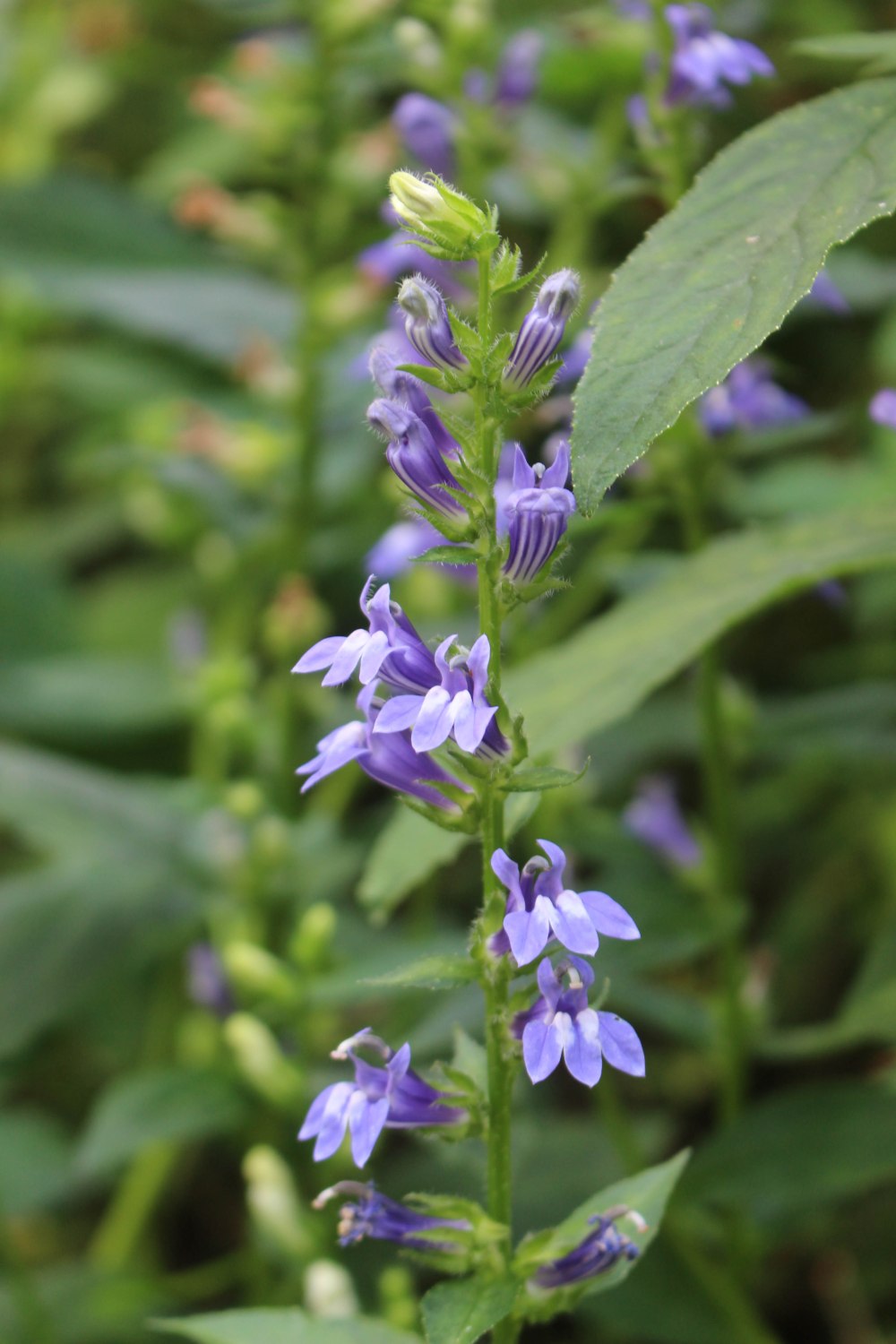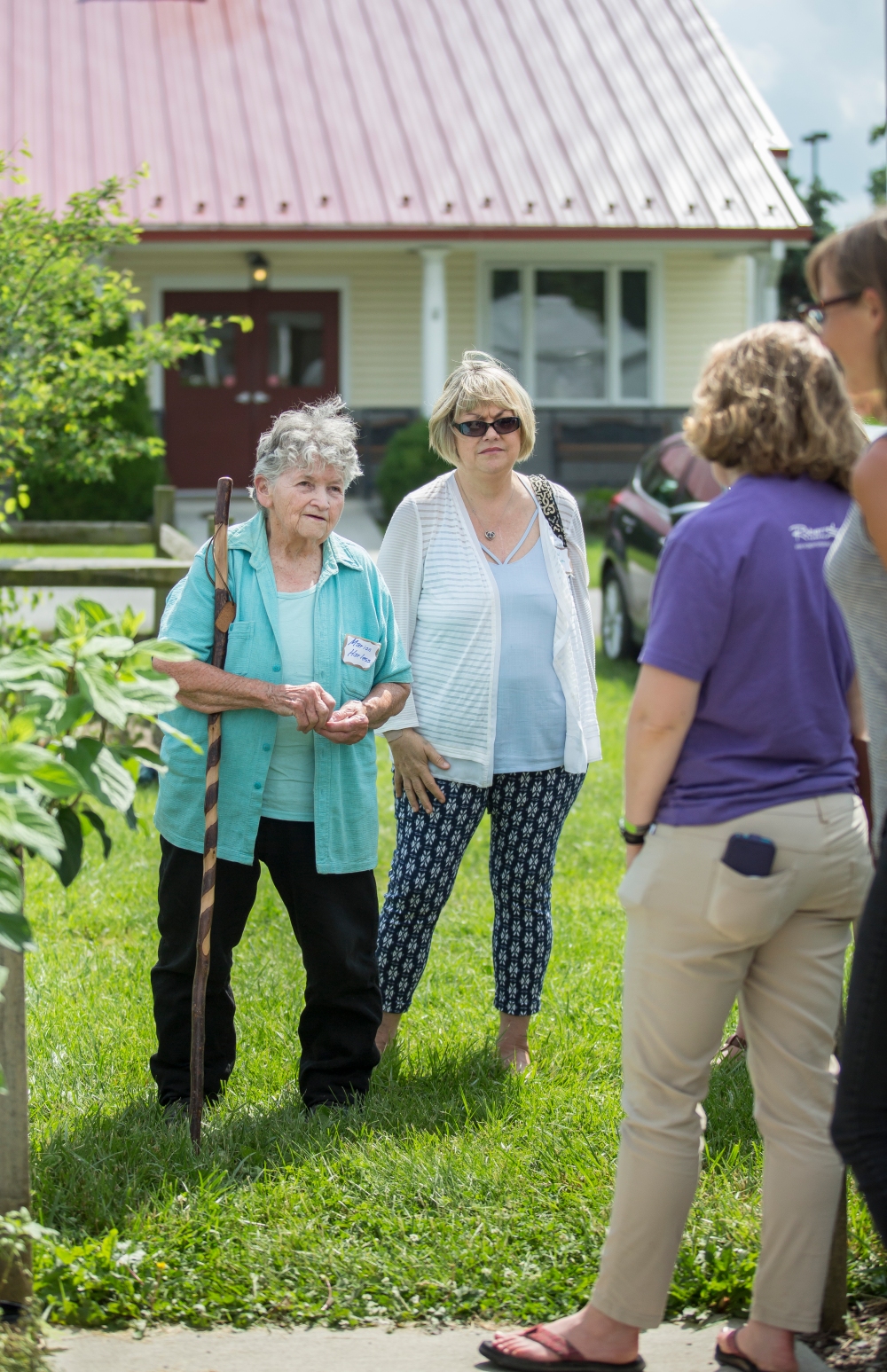 The fourth in a series featuring our five 2018 Folklife Apprentice pairs. View the first features here, here and here.
The fourth in a series featuring our five 2018 Folklife Apprentice pairs. View the first features here, here and here.
The West Virginia Folklife Apprenticeship Program offers up to a $3,000 stipend to West Virginia master traditional artists or tradition bearers working with qualified apprentices on a year-long in-depth apprenticeship in their cultural expression or traditional art form. These apprenticeships aim to facilitate the transmission of techniques and artistry of the forms, as well as their histories and traditions.
Marion Harless of Kerens is leading an apprenticeship in green traditions with Kara Vaneck of Weston. Harless is a co-founder of the Mountain State Organic Growers and Buyers Association and the West Virginia Herb Association, and has taught widely on medicinal herbs, edible landscaping, and native plants. Vaneck is the owner of Smoke Camp Crafts and has served as vice president and treasurer of the West Virginia Herb Association.

On Green Traditions by Kara Vaneck
Science recognizes 391,000 species of vascular plants in the world, according to a report by the Royal Botanic Gardens, Kew, in the United Kingdom. Nearly all of them are green, with the exception of the saprophytic and parasitic ones that feed on dead and living tissue, respectively, instead of sunlight. Traditions, in the context of this apprenticeship, shrinks this number considerably, narrowing the focus to those plants native to West Virginia and used by West Virginia inhabitants.
The topic “green traditions” touches on the biology, taxonomy, growth habits, evolutionary characteristics, uses, ethnographic persuasions, historical significance, and aesthetic aspects of plants. As a gardener and herbalist, studying plants from all angles enhances my ability to design gardens and medicines, in the same way the painter’s study of color and light improves her work.
From roots to fruits and soil to boil, plants provide nourishment, shelter, medicine and water. Aside from being critical to human survival, they are truly the most fascinating medium an artist could ask for, and they appeal to all the senses. Marion has a handsome Hanson’s Double Rugosa tea rose that welcomes visitors to her “mulch patch” garden with a fragrance to be remembered and a stunning display of decadent blossoms. Step too close, however, and its torturous thorns will not-so-politely discourage one’s approach. The feelings that arise when one is near to this plant are akin to those evoked by the most romantic of painting. A cup of tea made from its hips or petals further delights and impresses. One of nearly 400,000, this plant demonstrates the richness of the art form we’ve coined “green traditions.”

Marion Harless – Artist Statement
Like many other West Virginians whose families live around the edges of the state, I was born in a hospital in the adjacent state. I attended public schools in Weirton and earned Bachelor’s and Master’s degrees at West Virginia University.
My parents, Everett and Jane Hoag Harless, like many others of that era, were very knowledgeable about native and cultivated plants and their uses. My father grew up in Logan and my mother spent her first six years just across the Pennsylvanian border. After an apartment, they built a house on three wooded acres which expanded to seven and then to ten. Cleared areas for gardens, orchard, vineyard, chicken house had most trees removed, but many trees and shrubs were left in the area around the house. By the time I was five, I knew the names of the 21 tree and shrub species in the yard.
Until my final years in high school when my mother had taken a job and my father was again remodeling our house, we had a large garden. We preserved tomato juice and grape juice in gallon jugs. We made many kinds of wine. Hundreds of quarts of pears, peaches, blackberries, corn, green beans, vegetable soup, etc., provided nutritious meals. Pints of strawberry, raspberry, blackberry, currant, gooseberry, and fruit preserves, jams, and jellies provided extra nutrition and flavor. Zesty additions were sauerkraut and an array of pickles, relishes, chow-chow, tomato butter, and more.
My brother Ron and sister Merrill all learned planting, cultivating, harvesting, and processing techniques. We didn’t eat a preponderance of “wild foods.” Besides our cultivated grapes, cherries, and asparagus, we had wild ones. We picked, picked up, got, gathered, or dug. We never “foraged” but were always pleased to encounter new things in our explorations (Harry Caudill pointed out that is what “remoors” do and it often indicates rather mindless searching). “Go see if ____ is ready” was a common instruction. We knew where things grew.
In 4-H (ages 13-21), I took many projects each year, always including cooking, baking, insects, birds, and trees. 4-H then emphasized conservation, neighbors, relatives, nature, and conservation camps. Audubon and great professors in a huge variety of forestry, biology, and botany classes all added to my knowledge of plants and their uses.

Telling people about plants and their uses is one of my favorite things to do. Being able to work with one very interested person over an extended period is wonderful and I’m very grateful that the Humanities Council is allowing us to do this. Our title “green traditions” is meant to be very broad in order to explore numerous aspects of plants.
My long-time experience with wild and tame plants is extensive, but I am always learning new things. Publications of all sorts arrive frequently in my mail box, and I am an avid reader and rememberer.
Four papermaking workshops at Augusta for example, added a new dimension to plant uses. Selling naturally dyed, hand spun, handwoven scarves of local wool and mohair and selling produce, herb plants and herb products at home, a health food store in Texas, and at the Elkins Farmers’ Market is another component. Incorporating plants into printmaking classes at Midwestern State University and the University of Texas at Arlington was another expansion. Teaching people from age 4 to 80 has been a constant pleasure and I learn something from nearly everyone.

Kara Vaneck – Artist Statement
Having grown up in a suburb of Cleveland, my early childhood exposure to plants was limited to the tamed and manicured landscapes so ubiquitous in urban housing developments. When I was six, my parents took me to visit my great grandmother Elizabeth Rado on the east side of Cleveland where I rambled through fields of wildflowers that had taken the place of the once prolific vegetable gardens and picked raspberries and currants that tasted like nothing I’ve had since. That memory stayed with me throughout the rest of my childhood and teenage years.
It wasn’t until after college when I moved to Corfu, Greece to work on an organic kiwi farm, that that my passion for plants blossomed. Most people in Greece kept gardens of their own and I observed them closely. I still employ some of the practices that I learned from those small homestead gardens, one of which is the use of irrigation ditches between garden beds through which rainwater from my roof is directed.
Countless subsequent experiences, including running a small market garden through the West Virginia Small Farm Center and an apprenticeship with Dot Montgillion, a long-time West Virginia herbalist, provided me with the requisite knowledge to work with Marion Harless, whose expertise in the fields of plant ecology and Appalachian ethnobotany is unmatched.
The apprenticeship program grants are administered by the West Virginia Folklife Program at the West Virginia Humanities Council in Charleston and are supported in part by an Art Works grant from the National Endowment for the Arts. West Virginia Folklife is dedicated to the documentation, preservation, presentation, and support of West Virginia’s vibrant cultural heritage and living traditions.

